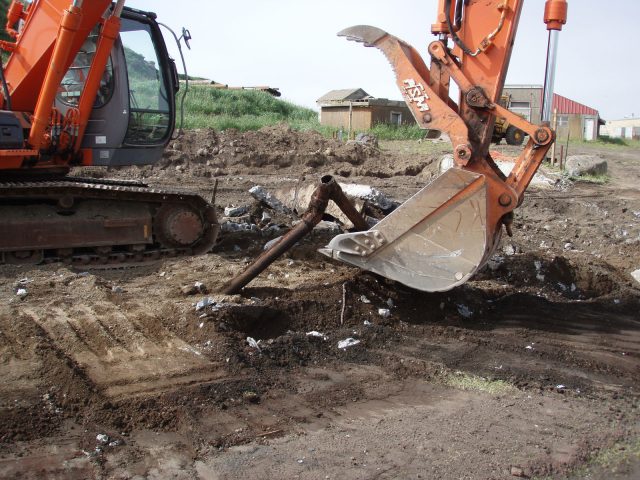Last Updated on November 19, 2022 by
Garage Floor Drain
Garage floor drains are typically found in garages with pits. The pit is usually dug into the ground below the garage, but some have a floor drain that allows them to be covered by an access panel.
The installation of a drain over a pit requires the proper foundation. A concrete foundation should always be used when installing any kind of basement or underground drainage system. There are other methods available. However, they are not recommended because there are at least two issues concerning their ease of use and quality of results.
- Garage floor drains can be installed using three different techniques depending on what is available at your particular location. These techniques are trenching, bedding, and encased sumps. The first method involves digging trenches until you reach an excellent soil stratum. The trenches are then backfilled with a suitable aggregate and compacted.
- The second method, bedding, is used when the floor surface is too complicated or when there is a possibility of future settlement. In this case, a layer of asphalt concrete is placed over the entire area of the drain installation, followed by a layer of sand.
- The third method, encased sumps, is mainly used in areas where the groundwater table is high or where there is a large amount of water runoff.
How to install a floor drain in your garage?
In this tutorial, you will learn how to install a floor drain in your garage. The first step is to mark where you want the drain to be installed. Make sure that the floor slopes toward the direction of the gutter. This will prevent standing water if there was ever a leak or flood and ensures that wastewater flows into the drain quickly and thoroughly, so it does not pool underneath your car.
Use spray paint to coat areas with high moisture
Once you have marked out an area for your drain, use spray paint to coat areas with high moisture levels, so they are visible when you look at them from above. You may also want to test for moisture with devices like feeler gauges or metal probes dipped in contact cement (make sure both sides of these materials are coated with the adhesive). If you are installing a floor drain in a concrete floor, use a hammer drill to create a hole at least 2 inches in diameter. You can also use a masonry bit to widen an existing gap.
Use a chisel and cold-chisel to score around the edge of the hole
If installing your floor drain in an existing slab of asphalt or concrete, use a chisel and cold-chisel to score around the edge of the hole at least 1/2 inch deep. Then use a jigsaw to cut out the square around the hole. Pry out any remaining pieces of the old slab and clean the surface to level with the rest of the garage floor.
Install your drain
Begin by placing the flange over the hole in your garage floor. The flange should be flush with the floor’s surface, and there should be a small gap between it and the hole in which you are inserting your foam sealant.
Position screws around the edge of your drain’s flange
Next, take screws that are specifically made for use with concrete floors (not standard steel screws) and position them around the edge of your drains flange through either its predrilled holes or by using drill bits. Anchor these screws into the slab below the surface of your garage floor, but do not tighten them entirely yet because you want to make sure that all is well before doing.
You will also need to install bolts at least 1 inch longer than whatever length they were when they came out of the flange. These bolts will hold the drain in place while the concrete sets, so make sure that they are long enough to go all the way through both the flange and the slab.
Mix your mortar
Now it is time to mix your mortar. You will want a consistency that is about the same as toothpaste, so add just enough water to make it that way. Be sure to wear gloves and use eye protection because this stuff can be pretty messy. Scoop some of the mortar onto a flat surface and start spreading it around with a trowel until it is about 1/2 inch thick. Carefully place the drain into the hole in the floor, making sure that the bolts are still sticking out of the flange on top. Then press down on the drain so that the mortar squishes up between the drain and the flange.
Read More: Garage Side Entry Door: A Comprehensive Guide About Garage Side Entry Door
Now comes the hard part
Wait for the mortar to dry. You will want to let it sit for at least 24 hours, but preferably 48. Could you not move the drain or step on it during this time? Once the mortar has set, you can go ahead and tighten up the screws around the edge of the flange until they are all snug. If you use a tile floor, now is also an excellent time to install it. And there you have it! You have successfully established a floor drain in your garage. Now you can rest easy knowing that if there is any water damage, it will be directed straight to the drain and not pool under your car.
Most important part of any drainage system
The essential part of any drainage system is the proper slope to ensure water flow away from the structure. In general, you should have a minimum pitch of 1/4 inch per foot. However, if the ground is wet or frozen, you may need to increase the angle. One of the most significant advantages of having a garage floor drain is keeping your garage clean and dry. Not only does this make it safer for you and your family, but it also helps to protect your investment. A garage floor drain also makes it easier to work on cars or other projects in the garage.







